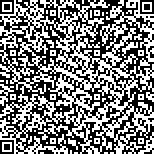| 摘要: |
| [摘要] 目的 探讨鼻咽癌治疗后残留或复发颈淋巴结的MRI的影像学表现,为临床诊断、治疗及研究提供依据。方法 收集有完整临床及MRI资料且经术后病理证实的鼻咽癌治疗后残留或复发颈淋巴结的患者42例和淋巴结反应性增生的患者14例进行分析。结果 鼻咽癌治疗后残留或复发颈淋巴结中央坏死、包膜外侵犯及融合发生率较高。本组有178枚淋巴结复发或残留,其中108枚(60.7%)包膜外侵犯。包膜外侵比例随淋巴结直径增大而增大(P=0.000)。鼻咽癌治疗后残留或复发淋巴结分布区域如下:Ⅰ区2例(4.6%),Ⅱa区4例(9.5%),Ⅱb区29例(69%),Ⅲ区13例(30.9%),Ⅳ区10例(23.8%),Ⅴ区11例(26.2%),Ⅵ区1例(2.3%),Ⅶ区1例(2.3%),咽后1例(2.3%),腮腺淋巴结1例(2.3%)。结论 MRI是诊断鼻咽癌治疗后淋巴结复发或残留淋巴结的重要手段。鼻咽癌治疗后颈淋巴结残留或复发区域以Ⅱb和Ⅲ淋巴结转移率较高,淋巴结包膜外侵比例与其最大径呈正相关。 |
| 关键词: 鼻咽癌 颈部淋巴结转移 磁共振成像 |
| DOI:10.3969/j.issn.1674-3806.2012.05.07 |
| 分类号:R 739.6 |
| 基金项目:广西卫生厅科研课题(编号:Z2008036);广西科学研究与技术开发计划项目(编号:桂科攻0816004-10) |
|
| The magnetic resonance imaging of residual or relapse lymph node in 42 patients with nasopharyngeal carcinoma after chemotherapy and/or radiation therapy |
|
HE Cheng-cheng,SI Yong-feng,WEI You-yong, et al.
|
|
Department of Otolaryngology Head and Neck Oncology,the People′s Hospital of Guangxi Zhuang Autonomous Region, Nanning 530021,China
|
| Abstract: |
| [Abstract] Objective To study the rule of magnetic resonance imaging (MRI) in the diagnosisi of residual- relapse lymph node metastasis in patients with nasopharyngeal carcinoma after chemotherapy and/or radiation therapy.Methods Forty-two patients proved residual or relapse and fourteen patients proved reactive by pre-operation histopathology were studied retrospectively. All patients had had their neck scanned by MRI with plain and contrast enhanced sequences.Results Central necrosis and extracapsular spread and fusion were easier to be seen in residual- relapse lymph node in post-therapy nasopharyngeal carcinoma after therapy. the distribution was as follows: 2(4.6%) in level Ⅰ, 4(9.5%) in level Ⅱa,29 (69%) in level Ⅱb, 13 (30.9%) in level Ⅲ, 10 (23.8%) in level Ⅳ, 11 (26.2%) in level Ⅴ, 1(2.3%) in level Ⅵ, 1(2.3%) in level Ⅶ, 1(2.3%) in retropharynx, 1(2.3%) in Parotid.In these patients, a total of 178 postive node, including 108(60.7%) extracapsular spread nodes, were detected. The proportion of nodal extracapsular invasion was higher when the axial diameter increased (P=0.000).Conclusion The level Ⅱb and Ⅲ were the most frequently involved regions. The proportion of extracapsular invasion of residual or relapse lymph node was positively correlated with axial diameter of lymph nodes. MRI is an important method in diagnosis of in residual- relapse lymph node in post-therapy nasopharyngeal carcinoma after therapy. |
| Key words: Nasopharyngeal carcinoma Cervical lymph Node Magnetic resonance imaging |

